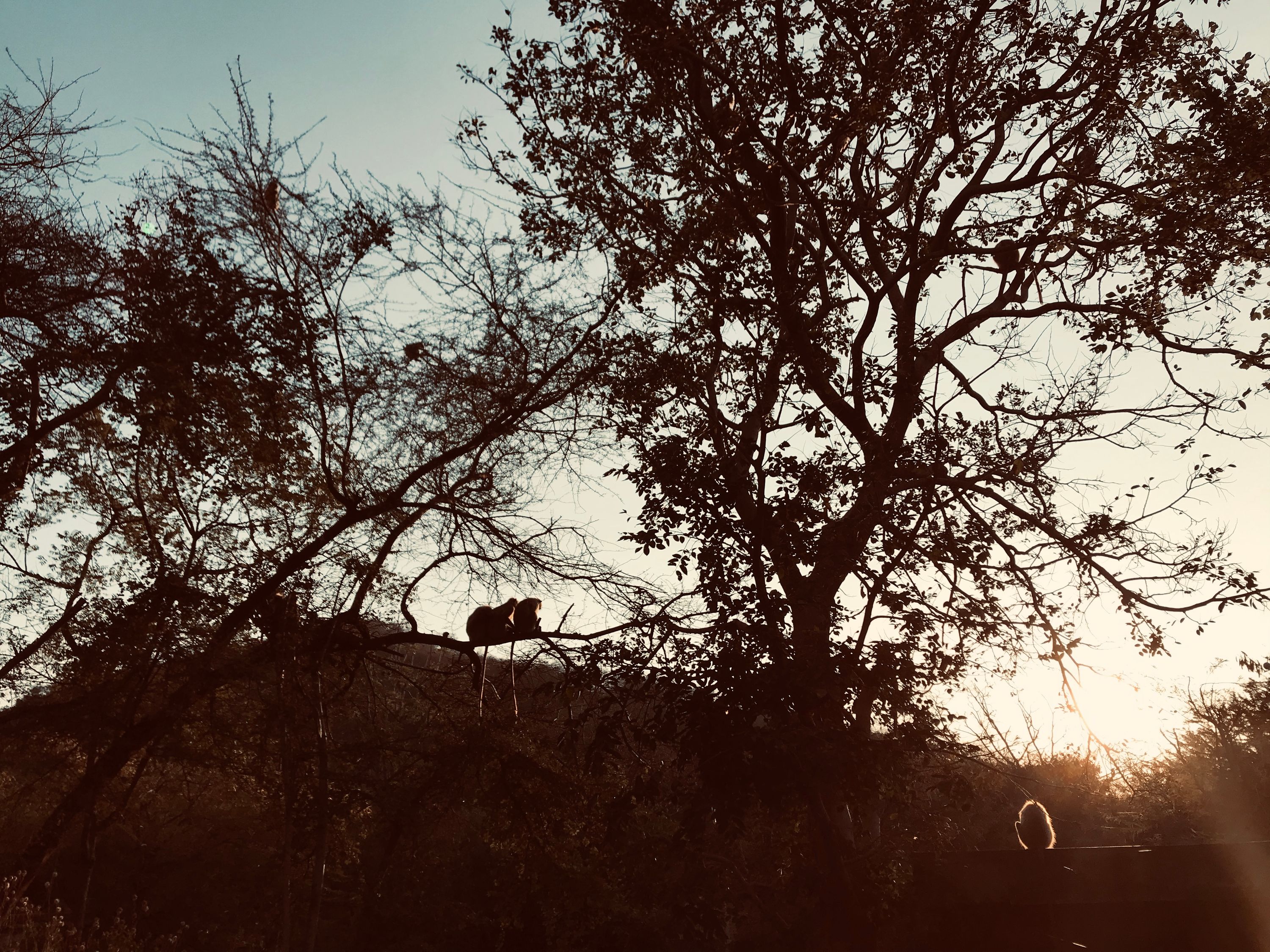 Vipassana centre, Jaipur, India
Vipassana centre, Jaipur, India
10 Days in Silence: Vipassana Meditation
What is “vipassana”?
I thought vipassana was a “silence retreat” first. A center where you spend 10 days, in silence, doing some mediation.
I went because a friend told me the retreat helped her focus on what matters in her life and get rid of the noise.
It turns out those 10 days are a meditation course. Noble silence* is a requisite for this course. This course is teaching vipassana mediation technique.
What is noble silence?
Noble silence is a silence of body, voice and mind.
Silence of body means that you can’t stretch, run or do yoga. You can’t communicate with other by glances or gestures. Eye contact isn’t authorized. Nothing. You can’t even lay down outdoors; that’s a distraction to others. If you do so, a Dhamma server (i.e. a volunteer assisting in running the course) will kindly tell you off accompanied by a namaste 🙏 . Silence of body restricts your activity to:
- walk at slow pace;
- eat — facing a wall;
- seat;
- stand;
- brush your teeth, wash your body;
- lay down on a bed, sleep;
- meditate.
Silence of voice is pretty straightforward. No talking. No use of your voice. That is actually the easiest, I found.
Silence of mind means that you should limit activities that distract your practice. That means no listening to music, reading or writing. Be present. Remain in silence. A few of us even got told off because we were starring at monkeys roaming around trees. There was a display for this:
“kindly do not pay attention to animals, they disturb your practice.”
In the park where we could stroll, there was also this display which I quite liked:
“Walk alone”
Silence of mind is the toughest of all silences. You are on your own. You are going wherever your thoughts will take you. There is no way to stop. Until the end.
Train you mind to focus
We are in continuous partial attention. We scan the world so we can remain “connected”. We fear of missing out. We lost some of our ability to focus. Some exercise I did during the course trainned my mind to focus. One exercise for instance was to focus on one square centimeter of my body for an hour or two.
Another exercise forced us not to change sitting position for an hour. That’s “sitting with strong determination.”
Schedule
First I thought not reading would be annoying. I thought I would get bored.
It turns out I didn’t have much time to wander.
Dhamma servers hit the gong at 4 am. First meditation session kicks in at 4.30 am, for 2 hours straight. Then comes breakfast with chanting blasting throughout the centre. Once breakfast is over, it’s rest time until 8 am. I would go to my room get some rest before the next meditation session from 8 to 11 am. 11 am is lunch time; last meal of the day. I did semi-fasting throughout the vipassana; that wasn’t hard surprisingly. The 12 to 1 pm break was a chance to stroll in the sun and warm up. There was no heaters at the centre and temperatures were between 7 and 19 degrees Celsius. Standing in the sun - and heat - were luxury. Everyone would stand in the sun to get stimulated by the sunbeam. At time they would be 30 to 50 people standing like sunflowers facing the sun until the end of midday break.
At 1 pm everyone went back to meditate in their rooms, in the hall or in their cell*. There were 3 mediation sessions followed by an hour break at 5 pm. This break was the last chance to catch up with the sun rays before another meditation session from 6 to 7 pm. Still, in noble silence. Always. 7 pm to 8.30 pm was a bit of a break for our minds. We would watch a video on the theory of vipassana/Dhamma. In silence. The day would end by 1/2 hour of meditation before heading to our rooms at 9 pm.
Bedroom
Nothing fancy here. A piece of wooden plank with a 5 centimeter mattress. A toilet, a sink and a tap. No hot water in the room. Hot water was available at a communal tap between 7 and 8 am, only.
Cell
As a “new student” (i.e. first-time vipassana student), you get to meditate in the meditation hall, and in your room when allowed by the teacher. That is pretty much it, except for a couple of days where your get access to your own private cell. The name is explicit, that a 1 by 1.5 meter room. No windows. There is only a squared cushion on the floor for you to sit, and meditate. The only one distraction you have is the light switch.
“Old students” (i.e. returning student) get access to a dedicated cell for the whole duration of a course.
People
In noble silence everyone is alike.
There were 200 men and about 80 women. There were no mixing authorised at all. Men and women took the course in separated sections of the centre.
Wildness in the meditation centre
There were peacocks living within and around the centre. They would stroll in the alleys, hang on trees, walls, roofs or on the pagoda as if they worked to check they territory. A hoard of monkeys would swing by once a day to feed themselves in trees surplanting the centre. Those animals were quite a distractions. Dhamma servers worked to have us respect noble silence. Silence of mind.